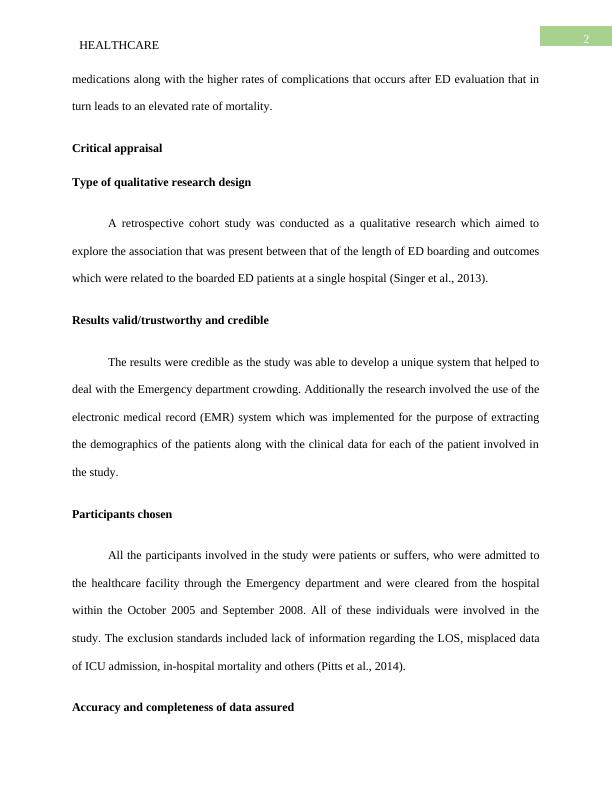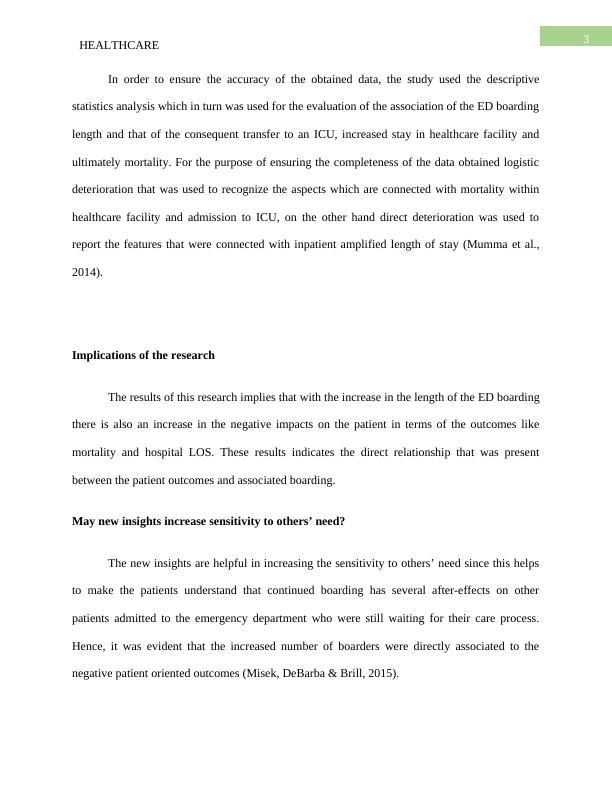Literature Survey on Emergency Room Boarding
15 Pages3174 Words316 Views
Added on 2023-04-20
About This Document
This document is a literature survey on emergency room boarding and its impact on patient outcomes. The study explores the association between the length of boarding and negative patient-oriented outcomes such as mortality and hospital length of stay. The findings suggest that prolonged boarding is associated with increased mortality and longer hospital stays. The study emphasizes the need for strategies to reduce boarding and improve patient outcomes.
Literature Survey on Emergency Room Boarding
Added on 2023-04-20
ShareRelated Documents
End of preview
Want to access all the pages? Upload your documents or become a member.
Good Service Initiative Assignment
|7
|1618
|29
Bed Flow Management in Emergency Departments
|19
|5799
|5
Knowledge and Practices of Postgraduate Student Nurses in UK Universities Regarding Triage System in Hospital Emergency Departments
|24
|7592
|123
Pediatric Medication Safety in Emergency Department
|12
|5039
|181
Part III: Balance Scorecard Creation
|7
|1057
|239
Non-Urgent Visits to Emergency Department: Consequences and Solutions
|8
|1642
|432




